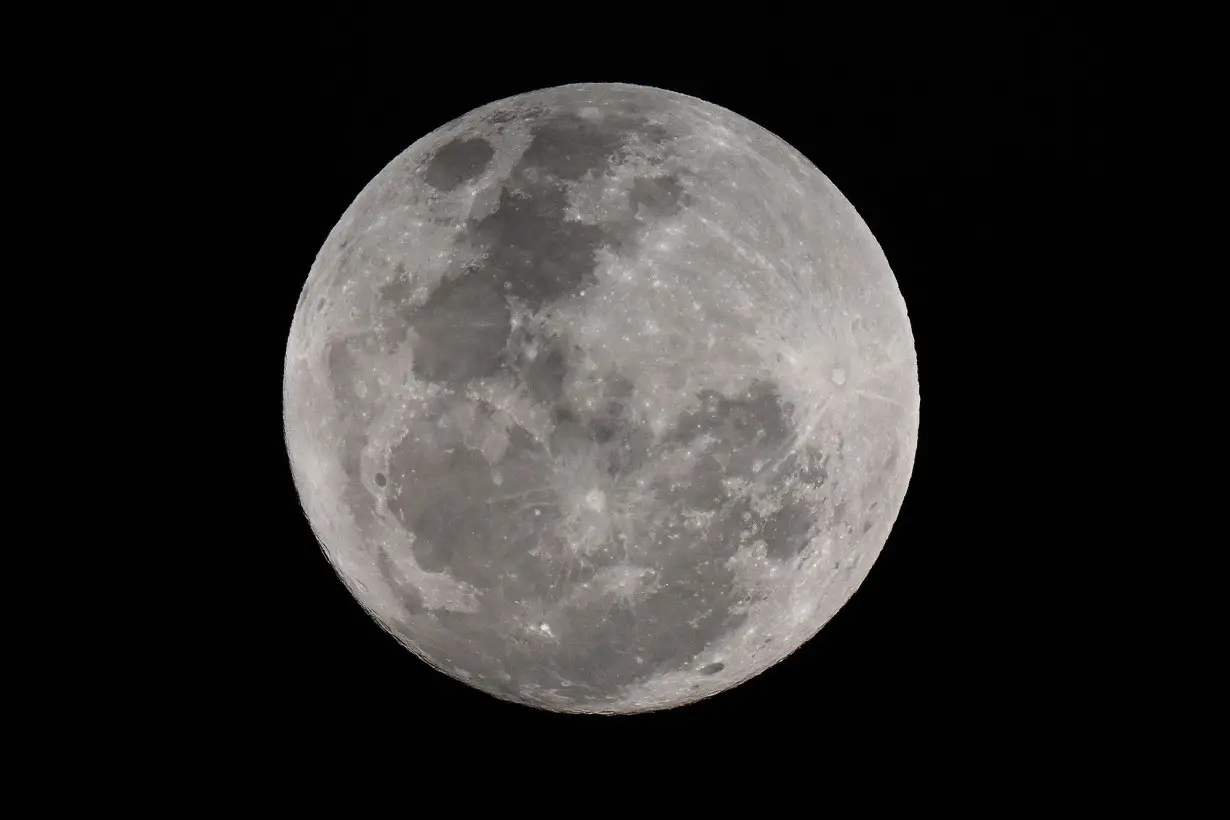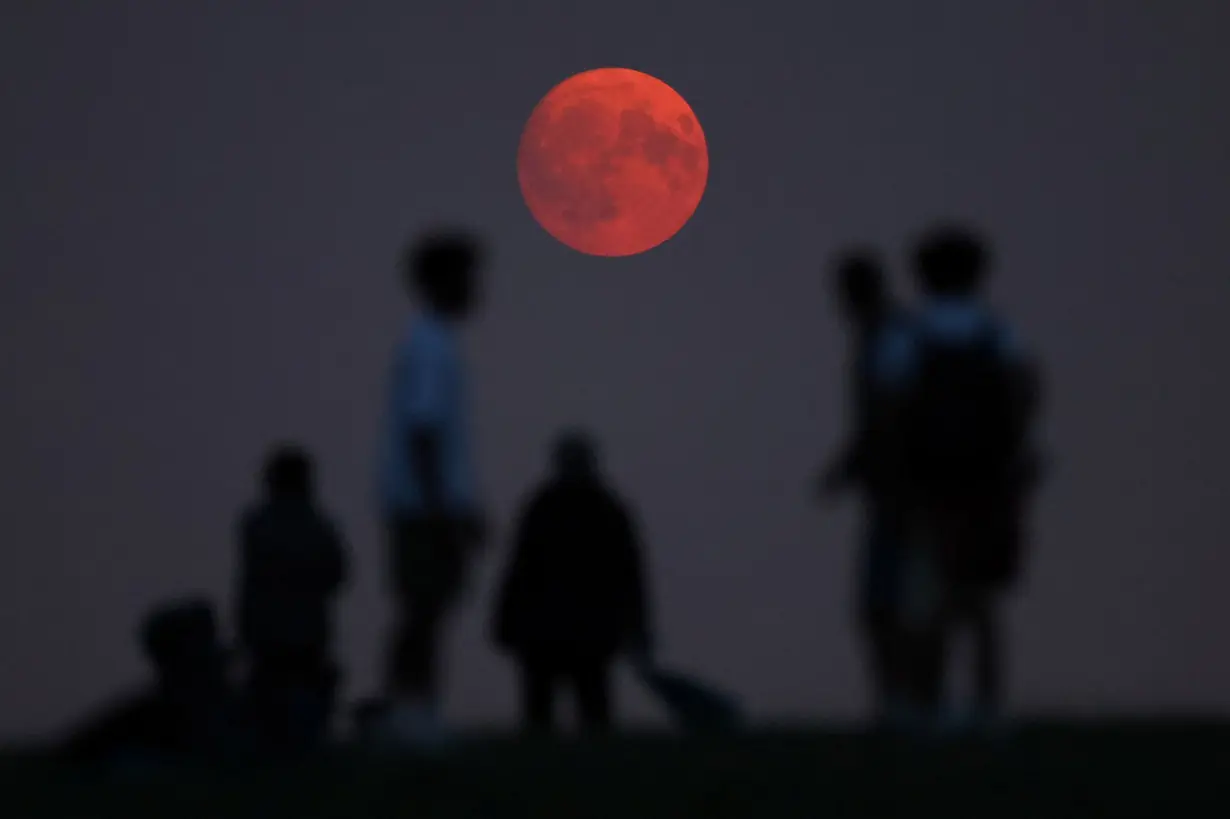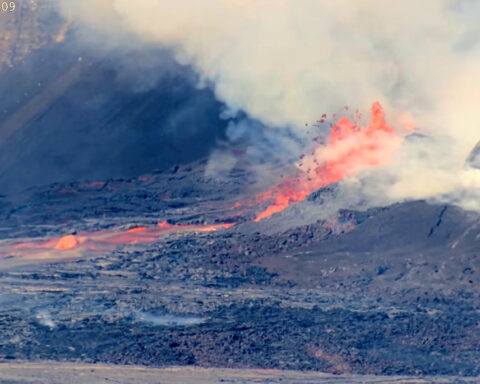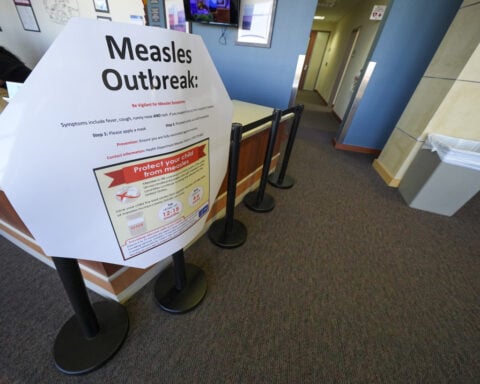(CNN) — August continues to be an exciting month for sky-gazers. Closely following the peak of the Perseid meteor shower last week, the first of the year’s four consecutive supermoons is set to rise on August 19. The rare cosmic combination of a supermoon and blue moon peaks at 2:26 p.m. ET Monday.
The last time this lunar event occurred was August 2023, and the next super blue moons are projected for January and March of 2037. Approximately one-quarter of all full moons are supermoons, while a mere 3% of full moons are blue moons.
So-called supermoons appear as the biggest and brightest lunar events of the year. The moon’s orbit around Earth is not a perfect circle but an elliptical path. Scientists refer to the moon’s nearest point to Earth — an average distance of about 226,000 miles (363,300 kilometers) — along its 27-day journey as the satellite’s perigee, according to NASA.

There are varied definitions for supermoons, said Noah Petro, lab chief of NASA’s Planetary Geology, Geophysics and Geochemistry lab. However, a full moon within 90% of perigee is often described as a supermoon, he said.
When the moon is closest to Earth in its orbit, it can appear up to 14% larger and 30% brighter than when it’s at its farthest point from the planet, known as apogee, about 251,000 miles (405,500 kilometers) from Earth.
While this perceived size increase might be subtle, NASA describes a supermoon as noticeably brighter than other full moons throughout the year. It may be challenging to see the difference, but a supermoon significantly impacts Earth, leading to higher-than-normal tides due to its proximity.
Supermoon visibility
Supermoons are observable to the naked eye and do not require a particular location for viewing. Throughout the night, the moon will rise higher until just before sunrise.
Shannon Schmoll, director of Abrams Planetarium at Michigan State University, said if the sky is free of clouds and you have a clear view, you will be able to see the moon.
“It’s bright enough that you don’t need to go anywhere special,” and visible right after the sun sets, she said.
Petro said the joy of these full moons is that if cloud coverage obscures visibility, you can look any night before or after the full moon peaks.
“So there’s really three days where the full moon is going to be most beautiful,” he said.
“The thing about these super moons is because they’re so much closer, they’re also brighter.” He noted that if it’s a clear night, you may notice the shift in brightness outside. “You’ll be treated to this beautiful sight in the sky, which is our moon hovering off in the distance.”
Because supermoons are 30% brighter than average full moons, they are more easily detectable.
“It’s going to be a little bit brighter, and it’s always a good excuse to go outside and appreciate the universe, and our place in it, and what we can see from the Earth,” Schmoll said.
What are blue moons and sturgeon moons?
Despite the name dating from 1528, the moon will not appear blue in color, NASA’s Gordon Johnston wrote.
“Only when there’s a lunar eclipse does the moon appear to change color,” Petro said.
As with supermoons, there are varying definitions for blue moons — monthly and seasonal.
Schmoll explained that “on average, we have one full moon, per month, but because most of our months are slightly longer than a lunar cycle, that means if we end up with a moon right at the beginning of a month, we might have another full moon again at the very end of the month. So sometimes that’s called a blue moon.”
A seasonal blue moon is often defined as the third full moon of an astronomical season with four full moons.
“If you take a season, a season is about three months long. So in that time, you would normally have three full moons in a single season, and if you end up with four in a season, the third one of the four would be the blue moon, and that’s what this blue moon is,” Schmoll said.
In the 1930s, the Maine Farmer’s Almanac started applying names corresponding to events in nature for the full moons, Petro said. These names have since become widely used and recognized. “Sturgeon moon originates from indigenous observations within the environment,” he said.
Maine Farmer’s Almanac states that the Algonquin tribes, who once lived in what is now the northeastern region of the United States, referred to the full moon in August as the sturgeon moon, named after the large fish caught more readily during this season.
Upcoming celestial events
Keep an eye out for Jupiter and Mars while peering at the moon, Schmoll said.
Last week, the two planets were aligned in conjunction, reaching their closest proximity to each other from Earth’s viewpoint since 2018. Jupiter and Mars will likely remain fairly close to one another in the sky during the supermoon’s peak, Schmoll said.
And in the next month or so, anticipate a brightening event, known as a nova, that will occur in the Milky Way’s Corona Borealis, or Northern Crown constellation. Astronomers expect T Coronae Borealis, nicknamed Blaze Star, to explosively burst as a binary system of a dead white dwarf star and an aging red giant star violently collapse.
“There’ll be what looks like a new star in the constellation for a few days to a week before it fades from view. And this is something that happens every 80 years or so,” Schmoll said. “That’s something that we don’t know exactly when it’s going to happen, but we are expecting it to happen.” Schmoll said.
Remaining supermoons of the year
The remaining supermoons of 2024 will occur on September 18, October 17 and November 15.
The September supermoon will also be a partial lunar eclipse, meaning Earth will cast its shadow over part of the moon, Petro said. “It’s a partial one, so it’s not going to be as obvious to a viewer,” he said.
The fullest, largest moon of the year will rise in October. “The moon will actually be about 100 kilometers (62 miles) closer to the Earth on October 17,” Petro said.
The-CNN-Wire
™ & © 2024 Cable News Network, Inc., a Warner Bros. Discovery Company. All rights reserved.

 Trump has begun another trade war. Here's a timeline of how we got here
Trump has begun another trade war. Here's a timeline of how we got here
 Canada's leader laments lost friendship with US in town that sheltered stranded Americans after 9/11
Canada's leader laments lost friendship with US in town that sheltered stranded Americans after 9/11
 Chinese EV giant BYD's fourth-quarter profit leaps 73%
Chinese EV giant BYD's fourth-quarter profit leaps 73%
 You're an American in another land? Prepare to talk about the why and how of Trump 2.0
You're an American in another land? Prepare to talk about the why and how of Trump 2.0
 Chalk talk: Star power, top teams and No. 5 seeds headline the women's March Madness Sweet 16
Chalk talk: Star power, top teams and No. 5 seeds headline the women's March Madness Sweet 16
 Purdue returns to Sweet 16 with 76-62 win over McNeese in March Madness
Purdue returns to Sweet 16 with 76-62 win over McNeese in March Madness








